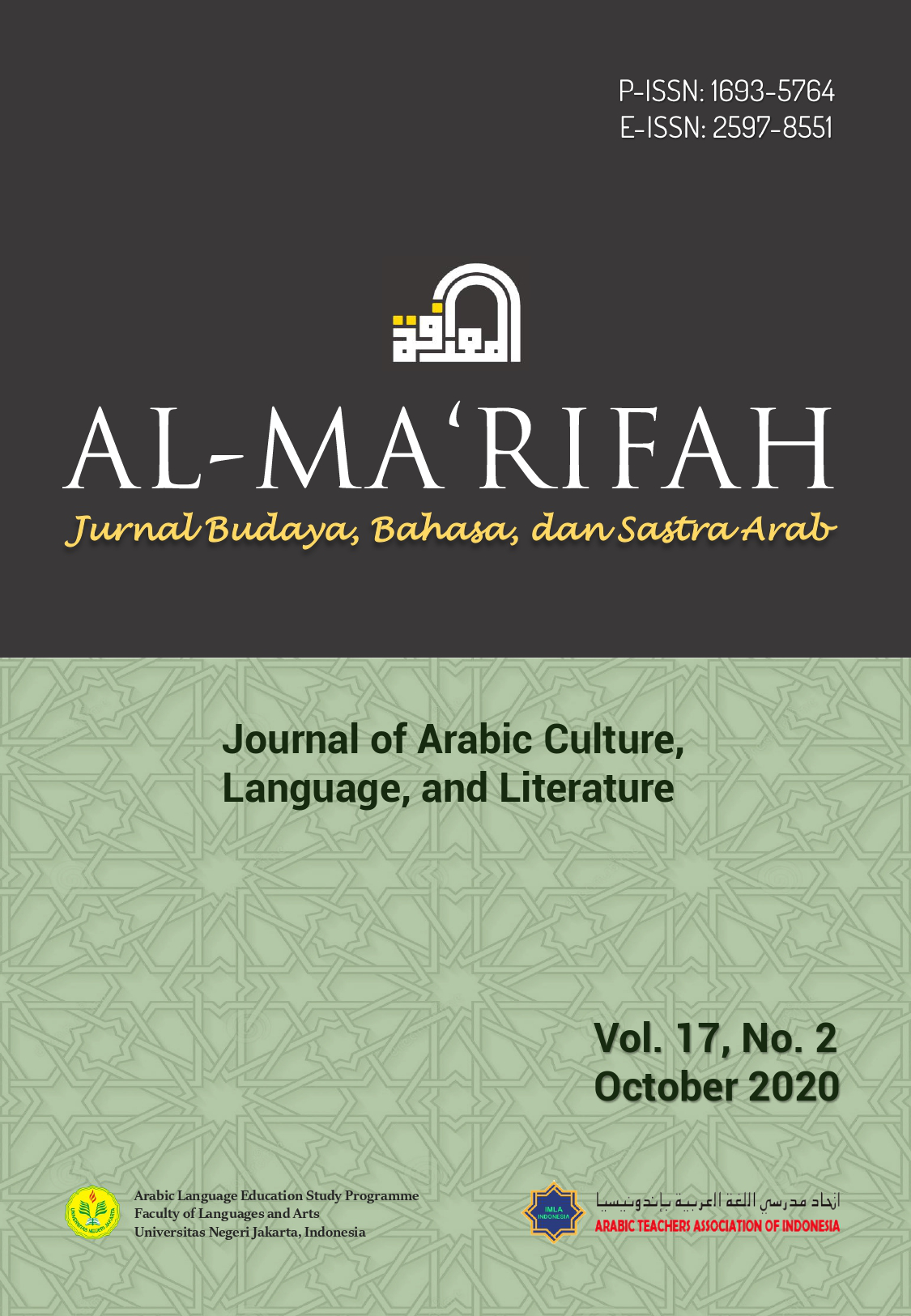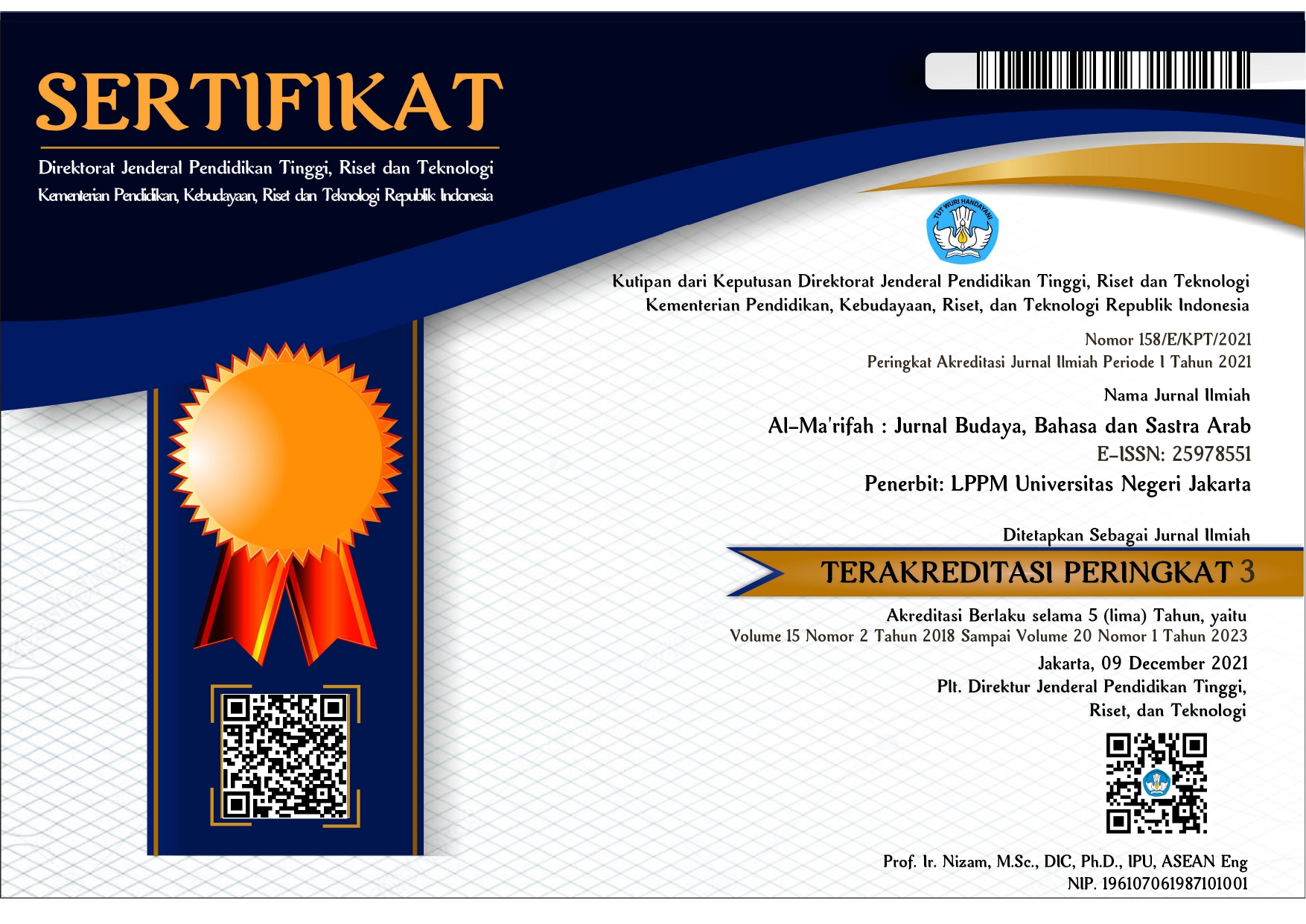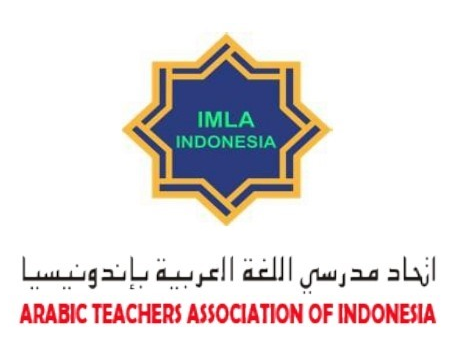al-Aṣwāt al-Mutaghayyirah fī Asmā’ al-Manāṭiq al-Indūnīsīyah ‘inda Naqlihā ilá al-‘Arabīyah: Dirāsah Fūnūlūjīyah
Abstract
This study aims to determine the change in the consonant phoneme that is found only in the Indonesian language which occurs in the Indonesian region when it is transliterated into the Arabic language. The research method uses a qualitative method of descriptive with review literature techniques. The data obtained from various regional names in Indonesia contained in the Arabic version of Google Maps and then grouped by certain criteria. Five consonant phonemes are only available in the Indonesian language and are not found in Arabic, such as: /c/,/g/,/p/,/η/, and /ñ/, so variations appear in the Indonesian transliteration symbols to the Arabic. The results showed that phoneme /c/ could be represented by the phoneme <س> <ك>, or grapheme <تش>, Phoneme /g/can be represented by the phoneme <غ> or <ج>, phoneme /p/ can be represented by the phoneme <ب> or <ف>, phonemes/η/or grapheme <ng> can be represented by the grapheme <نج>, <نغ>, <نق>, or <نك>, for the phonemes /ñ/ or grapheme <ny> can be represented by the grapheme <ني>. The phoneme changes are based on the proximity of articulation points. This research is a preliminary study to map the transcription symbol of Indonesian phonemes into Arabic.
Copyright (c) 2020 Muhammad Jamil

This work is licensed under a Creative Commons Attribution 4.0 International License.











